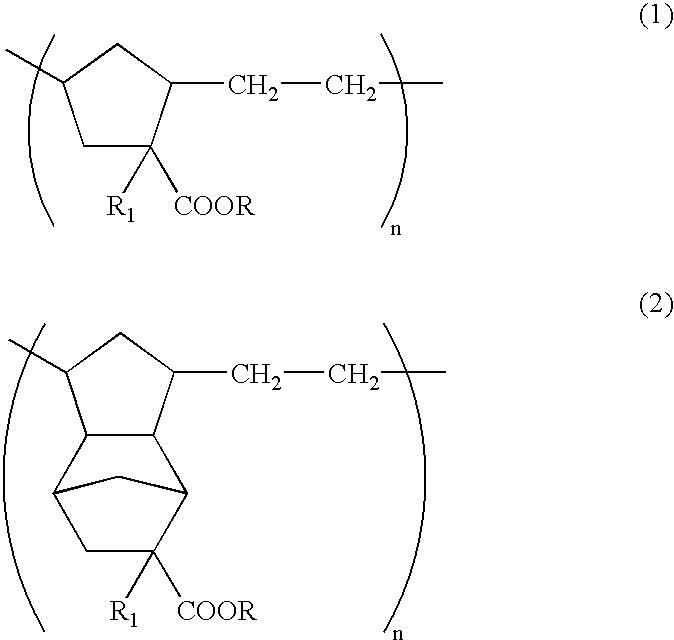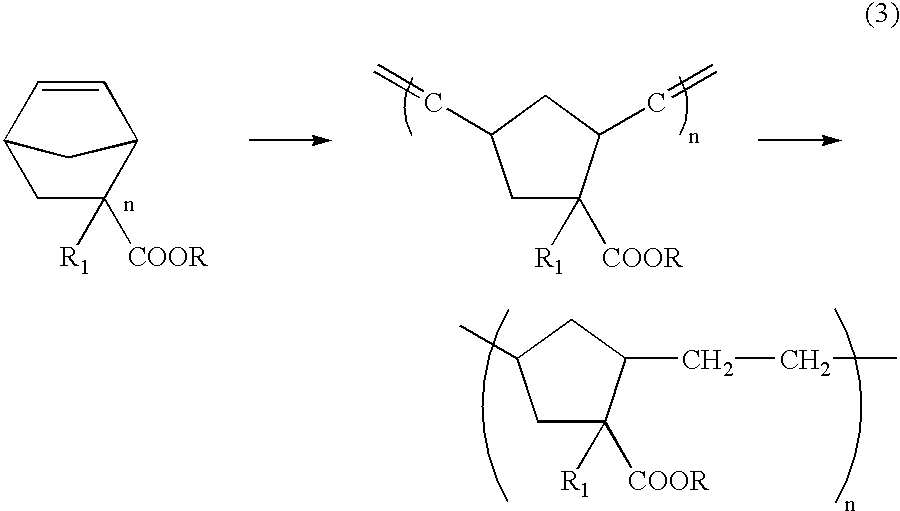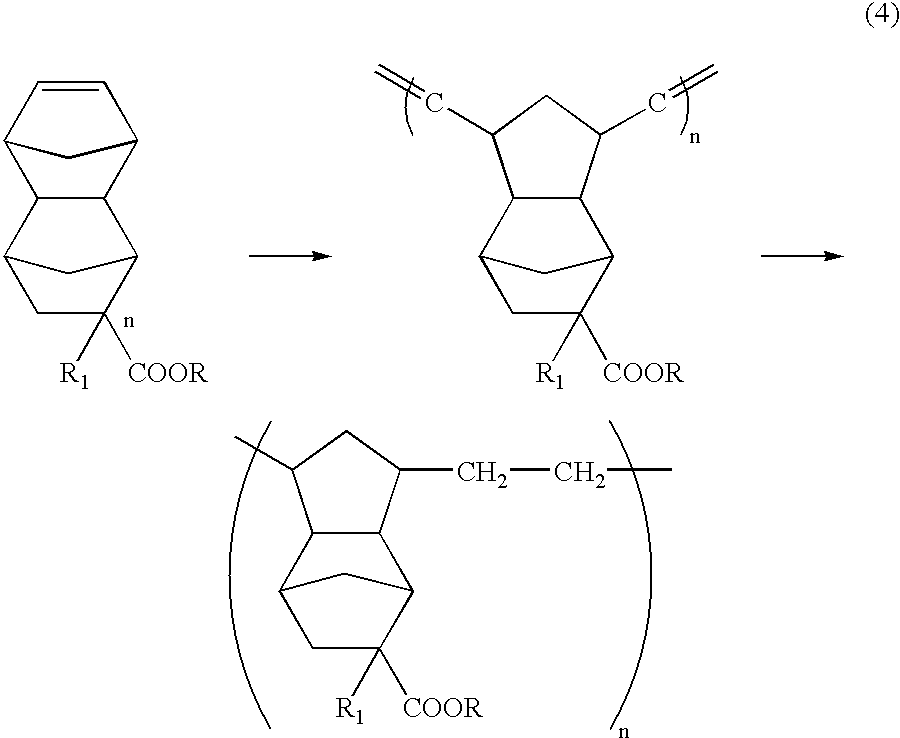Resist material and method for forming a resist pattern with the resist material
- Summary
- Abstract
- Description
- Claims
- Application Information
AI Technical Summary
Benefits of technology
Problems solved by technology
Method used
Image
Examples
second example
[0088] The second example differs from the first example in that another developer is used and a threshold energy Eth of quantity of radiation is 25.6 mJ / cm.sup.2. That is, a pattern resist film is formed according to the same method as in the first example.
[0089] As the developer, a solution of the tetrabutyl ammonium hydroxide (TBAH) having a concentration of 0.27 N is used.
[0090] As a result, a pattern resist film is obtained in the same manner as in the first example. Because of the threshold energy Eth of 25.6 mJ / cm.sub.2, a resolving power of 0.275 .mu.m at line and space is obtained.
third example
[0091] The third example differs from the first example in that another developer is used and a threshold energy Eth of quantity of radiation is 9.6 mJ / cm.sup.2. That is, a pattern resist film is formed according to the same method as in the first example.
[0092] As the developer, a solution obtained by mixing the TMAH solution of 0.27 N with iso-propyl-alcohol (IPA) is used. A mixing ratio is 3 (TMAH) to 1 (IPA).
[0093] As a result, a pattern resist film is obtained in the same manner as in the first example. Because of the threshold energy Eth of 9.6 mJ / cm.sup.2, a resolving power of 0.325 .mu.m at line and space is obtained.
fourth example
[0094] The triphenylsulfonium hexafluoroantimonate is added to cyclic hydrocarbon resin expressed by a chemical structural formula (34) as the acid generating agent to form a mixed product in which the triphenylsulfonium hexafluoroantimonate is included by 5% by weight, the mixed product is dissolved in the cyclo-hexane, and a resist solution is obtained. 18
[0095] Thereafter, the resist solution is spin-coated on a silicon substrate at a film thickness of 0.7 .mu.m. In this case, a surface of the silicon substrate is cleaned in advance with the HMDS. Thereafter, the silicon substrate is pre-baked on a hot plate for 100 seconds at a temperature of 100.degree. C. to form a resist film. Thereafter, the resist film is selectively irradiated with KrF laser having a wavelength of 248 nm by using the KrF excimer stepper (NA=0.45) manufactured by the Nikon corporation, and a latent pattern is formed in the resist film.
[0096] Thereafter, the resist film in which the latent pattern is formed ...
PUM
 Login to View More
Login to View More Abstract
Description
Claims
Application Information
 Login to View More
Login to View More - R&D
- Intellectual Property
- Life Sciences
- Materials
- Tech Scout
- Unparalleled Data Quality
- Higher Quality Content
- 60% Fewer Hallucinations
Browse by: Latest US Patents, China's latest patents, Technical Efficacy Thesaurus, Application Domain, Technology Topic, Popular Technical Reports.
© 2025 PatSnap. All rights reserved.Legal|Privacy policy|Modern Slavery Act Transparency Statement|Sitemap|About US| Contact US: help@patsnap.com



